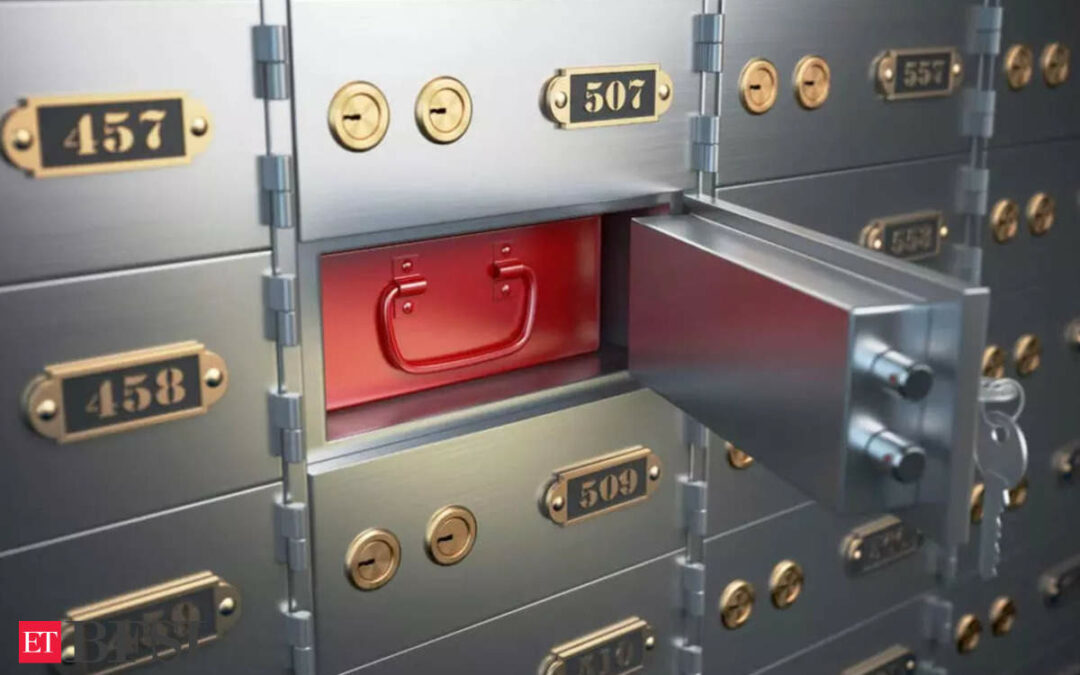Bank lockers provide a secure way to store valuable items, but there are specific guidelines on what can and cannot be kept inside them. The bank is responsible for losses due to its own negligence or fraudulent actions, with compensation up to one hundred times the annual locker rent in such cases. In the event of theft or damage due to the bank’s carelessness, similar compensation rules apply. For locker operations following a customer’s death, specific guidelines ensure that nominees or survivors have appropriate access to the locker contents.
Under the updated bank locker agreement, you are allowed to store valuable items such as jewellery, important documents, property papers, birth or marriage certificates, insurance policies, savings bonds, and other confidential materials in bank lockers.
The revised guidelines specify that cash and currency are not permitted in bank lockers. Additionally, you cannot store arms, weapons, drugs, explosives, or contraband items. The lockers are also not suitable for perishable goods, radioactive materials, illegal substances, or hazardous materials. Items that could create a disturbance or nuisance are also prohibited.
Bank responsibility
Banks are held accountable for losses resulting from their own failures, negligence, or fraudulent actions by employees. In such cases, the bank is required to compensate the customer with an amount equivalent to one hundred times the annual locker rent. For example, if the annual rent is Rs 4,000, the bank’s liability would be up to Rs 4 lakh.
Rules for bank lockers in case of theft
If damage or loss occurs due to the bank’s negligence, including incidents like fire, theft, burglary, or robbery, the bank is liable to compensate the customer with an amount equivalent to one hundred times the current annual locker rent. For instance, if the annual locker charge is Rs 1,000, the compensation would be Rs 1 lakh.
Rules for bank lockers in case of death
Customers should ensure they register a survivorship clause and nomination facility when opening a locker. The updated rules in case of death are:
- If a nominee has been appointed, they will be granted access to and allowed to remove the contents of the locker after the locker holder’s death.
- For lockers held jointly with joint operation instructions and appointed nominees, the bank will allow the nominees to operate and remove contents jointly.
- If a locker has a survivorship clause, such as “anyone or survivor,” “either or survivor,” “former or survivor,” or similar, the bank will follow the specified clause to provide access in the event of the locker holder’s death.
To check the availability of a locker at Indian Bank, follow these steps:
- Visit the ‘Online Locker Facility’ page on the Indian Bank website.
- Select the state, centre, and branch where you wish to obtain a locker.
- Enter the captcha code and click the ‘View Availability’ button.
Once you confirm the availability of lockers at your preferred branch, ensure you meet the eligibility criteria and have the necessary documents:
Eligibility:
- Individuals can open a locker singly or jointly.
- Limited companies, firms, and trusts are eligible.
- NRIs with existing lockers at Indian Bank.
Documents required:
- KYC documents (e.g., Aadhaar card, PAN card).
- A copy of your existing bank document.
- Locker agreement.
- Recent passport-size photographs.
You can apply for a locker online or offline. Here’s how:
Online:
- Go to the ‘Online Locker Facility’ page on the Indian Bank website.
- Enter the required details to check availability.
- If a locker is available, click ‘Click Here To Proceed’.
- Enter your bank account number and captcha code, then click ‘Submit’.
- Complete the locker opening form and upload the necessary documents.
- Provide nominee details and click ‘Submit’.
Offline:
- Visit the bank branch where the locker is available and obtain the ‘Locker Application Form’ from bank officials.
- Fill out the form with the required details.
- Submit the completed form along with other necessary documents at the bank branch.
To close your locker, follow these steps:
- Visit the Indian Bank branch where your locker is located.
- Submit an application to the bank manager requesting closure of the locker, including the reason for closure.
- Provide complete details of your locker.
- Settle any outstanding rent and empty the locker.
- Return the locker key and sign the required forms.
- Collect the duplicate copy of the locker surrender form.
Indian bank locker operation rules
To ensure smooth operation of your Indian Bank locker, adhere to the following rules:
- Access your locker only during normal banking hours.
- Always carry your locker key.
- Mention the locker number and visiting time during your visit.
- A bank official will accompany you while accessing your locker.
- Ensure you don’t leave personal belongings behind when exiting the locker room.










